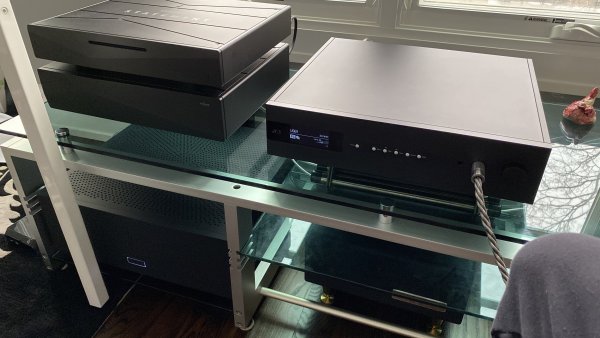My statements about SSDs are purely subjective and have been well documented on another site. SSD-related noise has been reported upon by others including the likes of Paul Pang, @Marcin_gps, @lmitche (on AS), and @Superdad and so I will give credit where credit is due. As some are aware, MacOS allows you to boot from an SD card and so back in 2017, this is what I was doing with my modified Mac Mini and the drop in harshness versus an SSD was astonishing. Even with the SSD powered by a battery or an LPS-1.2, the harshness (while less) was very much still there.
Going from a Samsung EVO SATA III SSD to Samsung EVO NVMe SSD lead to better immediacy but even more harshness and so there was an obvious tradeoff. I found that the harshness was not worth the improved immediacy and so I found NVMe SSD (via either M.2 or PCIe) to be the worst possible option.
I began using an Apacer SLC compact flash drive as an OS drive and this was better than an SD card and resulted in the lowest noise floor but this presented challenges as some operating systems (like Windows Server) will not boot from a CF drive. Ultimately, the biggest downside of flash media is they are very high latency drives and while the presentation is very relaxed, I feel like I am sitting way back in the balcony. If I had my way, I would be on the stage with the performers as I crave immediacy.
It is the same problem with SATA SSDs. The slower SATA II SSDs have less harshness than the faster SATA III SSDs with the SLC SATA II SSD sounding less harsh than the MLC variety. For some time, I was using the Intel X25-E as my SSD of choice. I experimented with various SATA cables and they made a difference and my preference was for the Pachanko SATA Reference. I also liked what the SOtM SATA II filter offered. Powered by an LPS-1.2, the noise floor was very low but once again lacked immediacy.
Optane drives are based on Intel's 3D XPoint technology and while not exactly memristor storage, according to @lmitche, it behaves similarly requiring no refresh activity to hold data. With traditional SSDs, there is constant refresh activity. This is why Optane, in theory, is so quiet -- it is quiet until you access it -- and it is so fast that the windows of activity are much smaller. Regardless of what is happening underneath, I have compared M.2 Optane versus M.2 NVMe SSD (Samsung EVO) and the Optane matches the immediacy of the Samsung EVO but does not have the harshness. These differences are not necessarily stark if the motherboard is being powered cleanly, however, to my ears they are fairly easily audible and over a span of a few hours, there is fatigue. Feel free to do the experiment yourself. It's not expensive to do.
Romaz, When you speak of your history with the Mac mini and SSDs causing harshness, are you referring to using the Mini to play from storage on the Mini specifically? I ask because I use the Mini as a Roon endpoint for streaming only, and have not noticed any harshness compared using the Extreme as the endpoint.
In other words, from your experience, do the non Optane SSDs have any peripheral negative influence on sq even if the Endpoint is used only for streaming?



